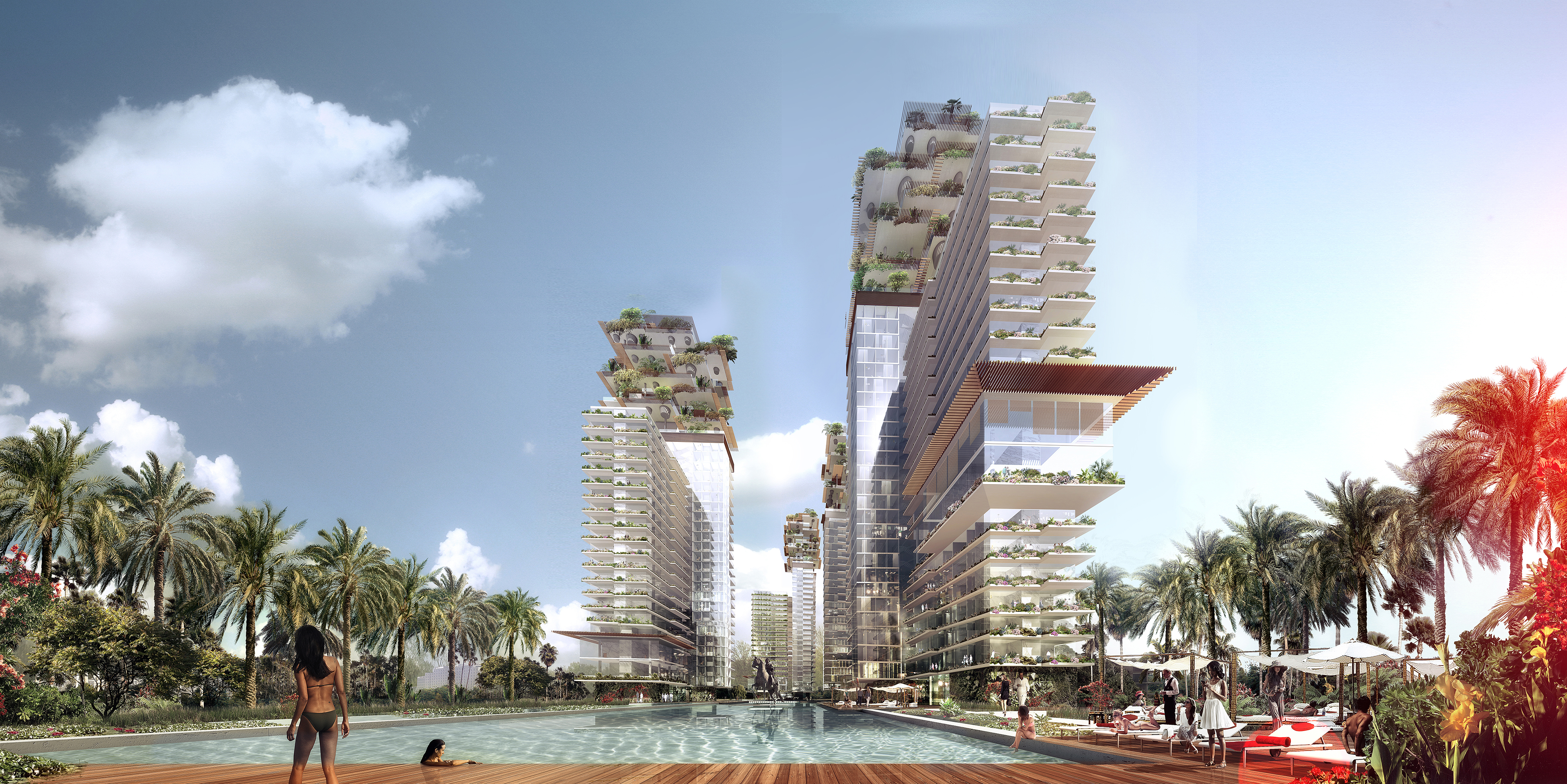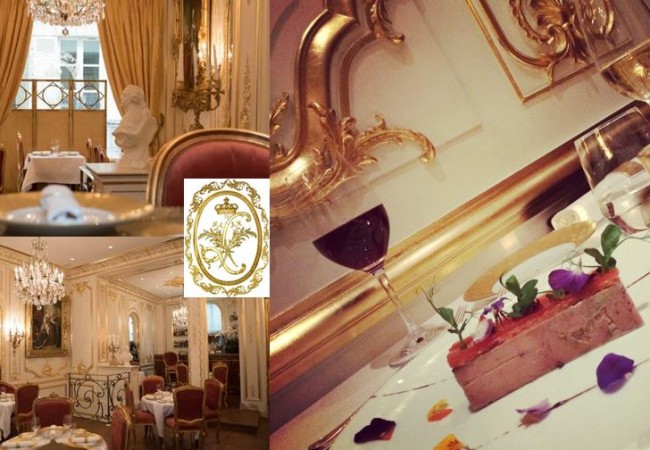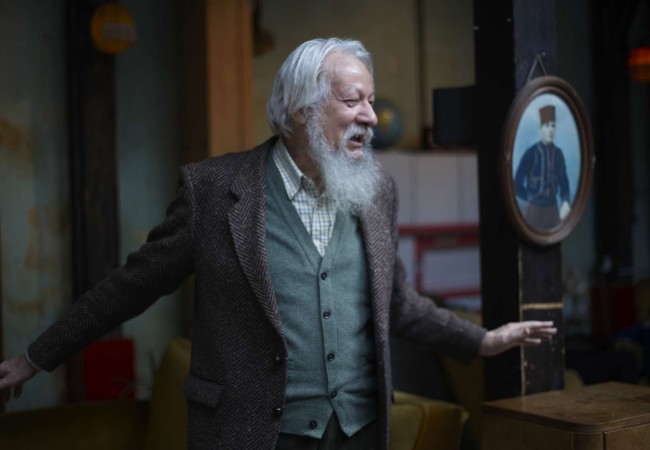Le jeu a gagné beaucoup de popularité ces dernières années…
Forest Jump – l’arbre
L’homme descend du singe comme le prouvent les acrobaties insensées de Kirill Oreshkin, qui se fait prendre en photo au sommet des gratte-ciels, suspendu au dessus du vide. Mais l’homme quand il abandonne la vanité et l’absurdité de la performance peut se prendre à rêver et trouver dans l’exaltation que procure la beauté, des raisons de se dépasser. Le singe donc descend de l’arbre et dans sa quête d’absolu l’homme y remonte.
Dans une nouvelle commandée par le Reader’s Digest en 1953, Jean Giono raconte l’histoire du Berger Elzéard Bouffier qui fait revivre une région de Haute-Provence en plantant des arbres.
«L’homme qui plantait des arbres» qui connut un retentissement mondial est une parabole de l’action positive de l’homme sur son milieu et est considérée comme un des premiers manifestes écologistes. L’arbre devient le symbole d’une civilisation éclairée et rend à l’homme autant son humanité que sa connexion avec les forces de la nature.
Désormais, la conscience de la nature est si forte que celle-ci revient au galop et s’impose dans la ville à travers les réalisations d’architectes visionnaires. L’image rêvée des jardins suspendus de Babylone ensemence les audaces d’urbanistes pour lesquels l’air, la lumière, l’espace, la forêt, l’horizon et la convivialité deviennent des signes distinctifs. Ils nous disent que la qualité de l’existence et les relations avec nos semblables sont indissociables de la profusion du monde végétal.
Loin de Babels comme la Burj Khalifa à Dubaï ou la Sky City Tower en Chine, fleurissent des rêves verdoyants et spacieux comme les «vertical forests» de Stefano Boeri et «L’arbre blanc» aux terrasses surgissantes comme des écailles de pin de Son Fujimoto et Nicolas Lainé. Quant à Édouard François avec sa Tower Flower aux pots géants, son immeuble qui pousse de Montpellier et son Gurgaon 71 à New Delhi aux lofts de 1000 m2 et aux vues panoramiques égalitaires il n’est pas un de ses projets qui ne tienne compte de la biodiversité. En atteste sa collaboration avec l’école d’horticulture, d’art et techniques du paysage Du Breuil dont l’apport en espèces rares et autonomes préfigure la nouvelle flore verticale urbaine. Avec le grand saut végétal l’homme ne descend plus seulement du singe. Il descend du songe.
Chloé Von Bestelaune
That primates are the ancestors of modern mankind has been proved by the daring acrobatics of Kirill Oreshkin, who has himself photographed at the top of skyscrapers, hanging above the void. But when acrobats put aside the vanity and absurdity of their performances, they’ll be able to dream and find the beauty the excitement brings, and the reasons to do better than ever before. Monkeys came down from the trees for prosaic reasons; acrobats climb back up.
In a story commissioned by Reader’s Digest in 1953, Jean Giono tells the tale of Berger Elzéard Bouffier who brought a region in the northern part of Provence in France back to life by planting trees.
“The man who planted trees”, which was a worldwide success, is above all a story about positive action by people in their surroundings, and is considered a pioneering manifest of ecology. The tree becomes the symbol of an enlightened society and gives unto mankind as much its humanity as its connection with the forces of nature.
Since then our, our awareness of nature has become so strong it hits us like tidal waves and is played out in cities through the creations of visionary architects. These are the dreamy images of the hanging gardens of Babylon conjectured by daring urban designers, for whom air, light, space, forests, horizons and community are distinguishing characteristics. They tell us that the quality of life and our relations with everyone around us go hand in hand with the growth of trees and plants.
Quite unlike the towers of Babel such as the Burj Khalifa in Dubai or the Sky City Tower in China flourish garden-lush dreams as spacious as the “Vertical Forests” designed by Stefano Boeri and the “The White Tree”, a building by architects Son Fujimoto and Nicolas Lainé whose balconies spread out like the scales of a pine cone. As for Édouard François and his “Flower Tower” with its giant flower pots built in Montpellier, France, and his “Gurgaon 71” in New Delhi with its lofts of 1,000 square meters and wide panoramic views, there aren’t any of his projects which don’t take biodiversity in to account. Proof of this is his collaboration with the Du Breuil School of Horticulture, Art and Landscape Techniques whose adoption of rare species of plants heralds a new era of vertical urban flora. With a great leap in to the plant world people are no longer descended from apes, we’re coming down from a dream.
Article Suivant: Designer Parfums – Jean Patou – luxe
Article Précédent: Fabienne Gonzales-Puyraimond, bijoux




